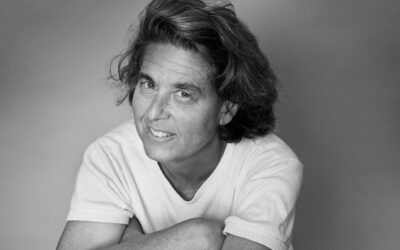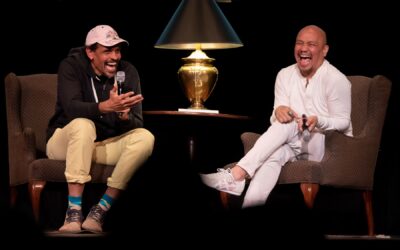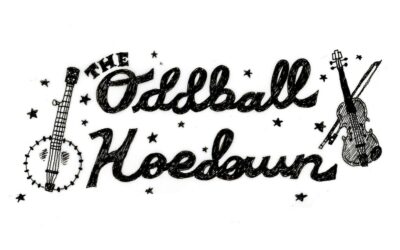Charles Mann’s latest book The Wizard and the Prophet explores two scientists’ lives in order to uncover the roots of the debate over how to address our biggest environmental challenges. In this double-biography, Mann finds humor, adventure and a warning about how to approach high-stakes problems. In a genre where authors often assume the righteousness of their chosen fix to the world’s ills, Mann makes the surprising choice not to choose between two potential paths forward, instead exploring each roadmap as far as he can.
In 1945, faced with an unplowed field, an old plow and no mule, Norman Borlaug—the “Wizard” of Mann’s title—strapped the plow’s harness onto himself. So strong was his desire to invent new wheat breeds for Mexico’s depleted soils and burgeoning population, he was willing to transform himself into a farm animal. Borlaug’s impoverished childhood on an Iowa farm motivated him to save others from the hopeless toil of raising crops that didn’t deliver. The scut work paid off: After countless attempts, his team bred disease-resistant wheat with heavy grains on short stalks that wouldn’t topple in the wind. Borlaug’s work in Mexico led to the Green Revolution, a worldwide movement toward high-input agriculture using fertilizers and souped-up hybrid plants. Crop yields surged—and so did populations.
But Borlaug had a nemesis equally ready to scramble in the field and trumpet his views: ornithologist William Vogt, the “Prophet.” Vogt saw Borlaug’s efforts in Mexico and despaired. He thought Borlaug was charging in the wrong direction: boosting yields rather than decreasing demand for food by limiting population growth or resource use. Vogt’s study of cormorant colonies on Peruvian islands showed the birds depended on nearby schools of fish. Though Peru wanted to keep fishing around the islands and mining the cormorants’ guano as fertilizer, Vogt urged restraint. Overfishing would mean no birds and no guano. In the bird colony, Vogt saw a vision of what would happen to humans if birth rates and consumption kept climbing. Vogt’s philosophy, crystallized in his book Road to Survival, influenced proponents of population control including scientists Paul and Anne Ehrlich. The Ehrlichs’ book Population Bomb drew heavily from Vogt’s work and motivated governments worldwide, especially China and India, to push the brakes on population growth.
Borlaug and Vogt developed two competing schools of thought for confronting environmental problems: the Wizard’s path, focusing on large-scale, tech-savvy solutions that could let society overcome constraints; and the Prophet’s soft path, emphasizing community-based solutions and living within limits. It’s scaling up versus scaling back. Mann confesses he often can’t decide which is better. “On Monday, Wednesday, and Friday, I think Vogt was correct,” he writes. “On Tuesday, Thursday, and Saturday, I go for Borlaug. And on Sunday, I don’t know.” Rather than picking a winner, he describes how each philosophy deals with the four most pressing environmental challenges: food, water, energy and climate change.
Mann’s book draws electricity from bringing together two people who didn’t want to meet in real life. The opposing forces allow The Wizard and the Prophet to sustain tension for challenging, detailed subjects. Mann dives into the thickets of energy systems and agricultural practices without sounding wonky—human stories help make the drama tangible.
Borlaug and Vogt are opposites in how they want to solve problems, but similar in one important way: they both acknowledge that there are environmental problems. This is not a false-balance project in which a scientist debates a science denier. Instead, it’s an exploration of knotty problems in which both viewpoints are worth spooling out and considering. It’s a refreshing approach in a genre where tend to preach and pontificate rather than self-reflect and investigate—the genre that Vogt and Borlaug helped create, books about the one sure way of the future.
Mann suggests we might not understand the available paths and their side effects well enough to choose between them. Had Vogt and Borlaug listened to their critics more closely, perhaps fewer people would have seen the two as “condescending aliens” whose ideas bore no relation to the messy world outside the lab. Mutual listening, Mann argues, is the first step toward consensus. The Wizard and the Prophet takes an ethical stance about what it takes to make an informed decision: A responsible choice means knowing the alternatives as well as your own favorite plan. Taking the two viewpoints seriously, without advocating for one, opens Mann’s discussion to a wider audience.
This isn’t a hagiography praising famous men—it’s nearly a double tragedy. Vogt’s and Borlaug’s blind spots in bringing their ideas to the larger world caused unintended harm, both to their own lives and to many others. And in evaluating the two philosophies, Mann asks a larger question about the human condition: Are we even capable of changing our behavior to save ourselves from collapse, a feat no other species has accomplished?
Only through overcoming our shortcomings and adapting our ideas to social contexts, Mann concludes, do we stand a chance against the challenges we face.



